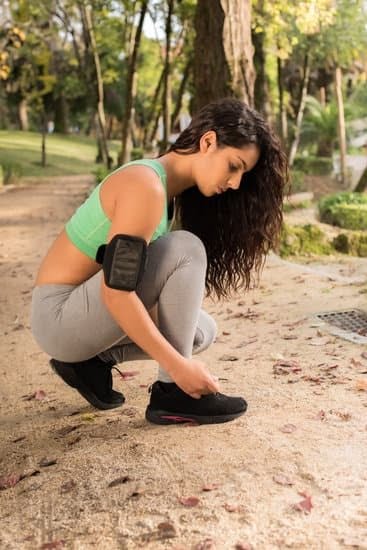Tony Little Exercise Sandals are a popular choice for individuals looking for comfortable and supportive footwear during their workouts. However, to truly experience the benefits of these sandals, it is essential to ensure they fit properly.
In this article, we will explore the key factors to consider when fitting Tony Little Exercise Sandals, such as foot anatomy, correct sizing, toe space, arch support, strap adjustments, and more. Understanding these important aspects will not only enhance your comfort but also contribute to your overall foot health.
Properly fitting exercise sandals play a vital role in preventing foot problems that can arise from wearing ill-fitting footwear during workouts. It is crucial to have a thorough understanding of the structure of your feet when selecting and sizing exercise sandals. By taking accurate measurements and considering individual foot characteristics such as arch height and width, you can choose the right size of Tony Little Exercise Sandals that perfectly align with your feet.
One crucial aspect to bear in mind when fitting these exercise sandals is ensuring adequate toe space. Your toes should have enough room to move comfortably without being pinched or restricted. This not only prevents discomfort but also promotes healthy blood circulation and reduces the risk of developing blisters or other foot issues. Tony Little Exercise Sandals are designed with ample toe space to ensure your feet feel unrestricted while exercising.
By focusing on proper fit, we can maximize the benefits of Tony Little Exercise Sandals in our workouts. The next sections delve into specific areas such as arch support, strap adjustments, common fitting issues, break-in periods, and even how to care for them properly. So let’s dive into the details and learn how you can achieve an optimal fit with Tony Little Exercise Sandals for a safer and more enjoyable workout experience.
Understanding Foot Anatomy
The structure of the foot plays a crucial role in determining the fit of exercise sandals, including Tony Little Exercise Sandals. Understanding foot anatomy is essential in finding the right fit and ensuring comfort and support during workouts.
The foot is a complex structure comprised of bones, muscles, tendons, ligaments, and joints. It consists of three main parts: the forefoot, midfoot, and hindfoot. The forefoot includes the metatarsals and phalanges (toe bones), while the midfoot contains important structures like the arches and tarsal bones. The hindfoot consists of the calcaneus (heel bone) and talus.
When it comes to fitting exercise sandals, it’s important to consider factors such as arch height, toe length, width measurements, and any pre-existing foot conditions or abnormalities. All these aspects can affect how well a sandal fits and performs during physical activities.
One key aspect to consider is arch support. The arches of the foot act as shock absorbers, distributing forces evenly across the foot during movements. Proper arch support in exercise sandals is crucial to maintain proper alignment and reduce discomfort or pain. Tony Little Exercise Sandals are designed with built-in arch support to provide stability and prevent excessive strain on the feet.
In order to find the perfect fit for Tony Little Exercise Sandals, individuals should measure their feet accurately using a measuring tape or ruler. By measuring both feet separately, one can determine if there are any differences in size that may require adjustments when choosing a sandal size. Additionally, it’s important to take into account any specific requirements such as extra room for orthotics or custom-made insoles.
| Foot Anatomy Factors | Considerations for Fitting |
|---|---|
| Arch height | Choose exercise sandals with proper arch support |
| Toes length | Select a size that allows adequate toe space |
| Width measurements | Determine if wide or narrow width options are available |
| Foot conditions or abnormalities | Consult with a healthcare professional for specialized fitting advice |
By understanding the structure of the foot and considering these factors, individuals can make informed decisions when choosing the right size and fit of Tony Little Exercise Sandals. This will help ensure optimal comfort, support, and performance during workouts.
Choosing the Right Size
Choosing the right size of Tony Little Exercise Sandals is essential for optimal comfort and support during workouts. It is important to measure your foot accurately to determine the correct size. Follow these steps to find the perfect fit:
- Measure Your Foot: Start by measuring your foot length and width. Use a ruler or measuring tape and place it against a wall. Stand with your heel against the wall, and mark the longest part of your foot on the paper or measure from the wall to this point. Measure both feet as one may be slightly larger than the other.
- Check Size Chart: Once you have your measurements, refer to the size chart provided by Tony Little Exercise Sandals. Compare your measurements with the chart to find your corresponding shoe size.
- Consider Toe Space: It is important to have adequate toe space in exercise sandals for foot health and comfort during workouts. Make sure there is about a half-inch of space between your longest toe and the front of the sandal.
- Try On Different Sizes: If you are between sizes or unsure about which size to choose, it is recommended to try on both sizes and walk around in them to see which feels more comfortable and provides better support.
Remember that proper fitting exercise sandals should feel snug but not tight, providing enough support without constriction or discomfort. Purchasing the correct size will ensure that you can fully enjoy all the benefits of Tony Little Exercise Sandals during your workout routine.
The Importance of Toe Space
One of the essential factors to consider when choosing exercise sandals is the amount of toe space they provide. Adequate toe space is crucial for foot health and comfort during exercise. When your toes have enough room to move and splay naturally, it helps distribute your body weight evenly and prevents discomfort or pain from developing.
When you engage in physical activities or exercises, your feet naturally expand as they warm up. Without sufficient toe space, your toes can become cramped and compressed, leading to a myriad of issues such as blisters, calluses, or even bunions. Additionally, tight-fitting exercise sandals can restrict blood circulation and cause numbness in the toes.
To ensure that you have enough toe space in Tony Little Exercise Sandals, it is recommended to select a size that allows approximately ¼ to ½ inch of extra space beyond the longest toe when standing. This extra room accommodates natural movement during exercise and allows proper alignment of the bones in the foot.
Having enough toe space also helps prevent toenail trauma during workouts. When toes are crowded together due to lack of adequate space, they can rub against each other or against the front of the sandals, leading to nail injuries or fungal infections. By allowing ample room for your toes to breathe and move freely, Tony Little Exercise Sandals promote overall foot health and enhance comfort during exercise.
| Foot Condition | Impact without Adequate Toe Space | Solution |
|---|---|---|
| Blisters | Tight-fitting sandals can cause friction on the skin, resulting in painful blisters. | Select a size with extra toe space and wear moisture-wicking socks to reduce friction. |
| Calluses | Prolonged pressure on specific areas of the foot can lead to the development of calluses. | Choose exercise sandals with roomy toe boxes to reduce pressure points and allow for natural foot movement. |
| Bunions | Tight footwear, including sandals, can contribute to the progression of bunions and exacerbate pain. | Ensure enough space in the toe area to accommodate bunion deformities and alleviate discomfort. Consider sandals with adjustable straps for a customized fit. |
Arch Support
Proper arch support is crucial when it comes to finding the perfect fit for your exercise sandals. The arch of your foot plays a significant role in providing stability, shock absorption, and balance while walking or exercising. Without adequate arch support, you may experience discomfort, fatigue, or even long-term foot problems such as plantar fasciitis.
Tony Little Exercise Sandals are designed with excellent arch support to ensure maximum comfort and minimize the risk of foot-related issues. The sandals feature a contoured footbed that supports the natural shape of your foot, including its arch. This design helps distribute body weight evenly across the foot, providing stability and reducing strain on the ligaments and tendons.
Not only do Tony Little Exercise Sandals offer superior arch support, but they also allow for easy customization. The adjustable straps enable you to tighten or loosen the sandals according to your preference and level of support needed for your individual arch type. Whether you have high arches, low arches, or neutral arches, you can find the perfect fit and maintain optimal foot alignment during your workouts.
In addition to their exceptional arch support, Tony Little Exercise Sandals also incorporate other features that contribute to their ideal fit. These include cushioned soles for shock absorption, non-slip outsoles for traction and stability, and breathable materials that keep your feet cool and dry during exercise. With all these elements combined, Tony Little Exercise Sandals not only provide comfort but also promote proper body alignment and support overall foot health.
Strap Adjustments
Tony Little Exercise Sandals are designed to provide a comfortable and supportive fit for all types of workouts. One of the key features that make these sandals unique is the adjustable straps, which allow individuals to customize their fit according to their preferences and needs. In this section, we will guide you through the process of adjusting the straps of your Tony Little Exercise Sandals for a perfect and customized fit.
- Step 1: Start by putting on your Tony Little Exercise Sandals and standing up. Ensure that your heel is properly positioned at the back of the sandal’s sole.
- Step 2: Look at the straps and identify any Velcro or buckle closures. Most Tony Little Exercise Sandals have multiple adjustable straps that can be adjusted individually.
- Step 3: Begin by loosening all the straps to their maximum length, so your foot has enough room to move comfortably.
- Step 4: Slowly start tightening each strap one by one until you feel a snug and secure fit on your foot. Make sure not to tighten them too much as it may cause discomfort or restrict circulation.
- Step 5: Pay special attention to the front toe strap, ensuring that it is adjusted in a way that allows enough space for your toes to move freely without feeling cramped.
- Step 6: Once you have tightened each strap, walk around and do some simple exercises to test out the fit. If anything feels uncomfortable or needs more adjustment, loosen or tighten as necessary until you find the optimal fit for your feet.
Adjusting the straps of Tony Little Exercise Sandals allows you to achieve a customized fit that caters specifically to your feet’s unique shape and size. This ensures maximum comfort and support during your workouts, preventing any potential injuries or discomfort caused by ill-fitting footwear. Take the time to adjust each strap carefully, following these step-by-step instructions, and enjoy the benefits of a perfectly fitting pair of Tony Little Exercise Sandals.
Remember, finding the right fit may require some trial and error, so don’t hesitate to experiment with different strap adjustments until you find what suits you best. With the ability to customize the fit of your Tony Little Exercise Sandals, you can enjoy the comfort and support you need to achieve your fitness goals without compromising on style or performance.
Break-in Period
The break-in period for exercise sandals is a crucial phase that allows your feet to adjust to the new footwear and ensures optimal comfort during workouts. During this time, it is normal for the sandals to feel slightly tight or uncomfortable. However, with proper care and attention, you can ease through the break-in period and enjoy the benefits of Tony Little Exercise Sandals.
Duration of Break-in Period
The break-in period typically varies from person to person and can last anywhere from a few days to a couple of weeks. It depends on factors such as individual foot anatomy, sensitivity, and how frequently you wear the sandals. It is important to note that pushing through discomfort should not cause pain or injury – if you experience any sharp or intense pain, it is advisable to consult a healthcare professional.
Tips for Ensuring Optimal Comfort
During the break-in period, there are several steps you can take to ensure optimal comfort:
- Gradual Wear: Start by wearing your Tony Little Exercise Sandals for short durations initially and gradually increase the time worn each day. This will give your feet time to adapt without excessive strain.
- Socks or Barefoot: Experiment with wearing your sandals with socks or barefoot. Some individuals find that wearing thin socks helps reduce friction and discomfort during the break-in period.
- Adjust Straps: Take advantage of the adjustable straps on Tony Little Exercise Sandals to customize the fit according to your preferences. Loosening or tightening them as needed can alleviate any pressure points or hotspots.
- Gentle Use: In the beginning, engage in low-impact activities while wearing your exercise sandals. This will help your feet adjust more comfortably compared to high-intensity workouts right away.
- Moisturize Feet: Applying a moisturizer on your feet before wearing the sandals can help reduce dryness and friction which may contribute to discomfort.
By following these tips and gradually breaking in your Tony Little Exercise Sandals, you can ensure optimal comfort and foot health during your workouts. Remember, listening to your body and allowing ample time for adjustment is key in making the most out of your exercise sandals.
Common Fitting Issues
Tightness
One common fitting issue that individuals may face with Tony Little Exercise Sandals is tightness. If the sandals feel too tight around the foot, it can cause discomfort and restrict proper movement during exercise. To resolve this issue, there are a few steps that can be taken.
First, check if the straps of the sandals are adjusted properly. Loosen them slightly if they feel too tight and adjust them to achieve a comfortable fit. It is important to ensure that the straps are not too loose either, as this can lead to slippage. Finding the right balance is key.
Additionally, individuals can try wearing their sandals for short periods of time at home to gradually break them in and allow them to conform to the shape of their feet. This can help alleviate any tightness felt initially and improve overall comfort.
If these steps do not resolve the issue of tightness, it may be necessary to consider trying a larger size or exploring different styles of Tony Little Exercise Sandals that better suit one’s foot shape and size.
Slippage
Another common fitting issue with exercise sandals is slippage. If the sandals constantly slip off or slide around on the foot during physical activity, it can hinder proper performance and increase the risk of injuries.
To address this problem, start by adjusting the straps accordingly. Tighten them slightly for a more secure fit without causing discomfort. It is important to find the right balance between snugness and comfort.
Furthermore, consider adjusting the heel strap if applicable. This additional strap helps provide stability and prevents slippage by securing the back of the foot in place.
If slippage still persists after adjusting both straps, it may be necessary to explore different styles or sizes of Tony Little Exercise Sandals that offer better grip and stability for individual needs.
Discomfort
Discomfort is another common fitting issue that people may experience with their Tony Little Exercise Sandals. If the sandals cause discomfort or pain in certain areas of the foot, it can greatly affect one’s ability to fully enjoy and benefit from the workout.
To address this issue, consider assessing the fit of the sandals. Check if there are any pressure points or areas where the sandals rub against the skin. Adjust straps accordingly to alleviate any tightness that may be causing discomfort.
It is also recommended to wear socks with the exercise sandals initially, especially during the break-in period. This can help reduce friction between the foot and sandal, preventing blisters and discomfort.
If discomfort continues despite these adjustments, it may be necessary to consult a podiatrist or footwear specialist who can provide personalized advice and recommendations based on individual foot anatomy and needs.
Proper Care and Maintenance
Taking care of your Tony Little Exercise Sandals is essential to ensure their proper fit and longevity. By following some simple care and maintenance tips, you can keep your sandals in great condition for long-lasting use.
One important aspect of maintaining the fit of your exercise sandals is cleaning them regularly. To clean your Tony Little Exercise Sandals, start by removing any excess dirt or debris with a soft brush or cloth. Then, fill a basin with warm water and mild soap.
Gently scrub the sandals with a soft brush or sponge to remove any stains or dirt buildup. Rinse them thoroughly with clean water and let them air dry. Avoid using harsh chemicals or bleach, as they can damage the materials of the sandals.
When it comes to storing your Tony Little Exercise Sandals, it’s important to keep them in a cool, dry place away from direct sunlight. Storing them in excessive heat or damp conditions can cause damage to the materials and affect the fit over time. You can store them in a shoebox, cloth bag, or an open shoe rack that allows for proper airflow. Additionally, avoid stacking heavy objects on top of your sandals as it can misshape them.
By following these care and maintenance tips, you will ensure that your Tony Little Exercise Sandals continue to provide a comfortable and supportive fit for all your workouts. Taking care of your footwear not only prolongs their lifespan but also maintains their performance so you can get the most out of every workout session.
Remember to periodically check for any signs of wear or damage and replace your exercise sandals if needed to maintain optimal foot health and support during exercise.
Conclusion
In conclusion, it is vital to ensure a proper fit when it comes to Tony Little Exercise Sandals. Throughout this article, we have explored the importance of understanding foot anatomy and choosing the right size based on individual foot measurements. We have also discussed the significance of toe space and arch support, as well as provided step-by-step instructions on adjusting the straps for a customized fit.
One key takeaway from this discussion is that having a proper fit in exercise sandals is crucial for foot health and comfort during workouts. Inadequate toe space can lead to discomfort and potentially harm foot health, while improper arch support can result in pain or instability during exercise. By investing in Tony Little Exercise Sandals and following the fitting guidelines outlined here, you can ensure optimal support and protection for your feet.
Furthermore, it is important to address any common fitting issues such as tightness, slippage, or discomfort and find suitable solutions to resolve them. Taking care of your exercise sandals through proper cleaning and storage will also help maintain their fit and longevity over time. Remember that finding the right fit may involve a break-in period, so be patient with the adjustment process.
Ultimately, wearing properly fitting exercise sandals will allow you to maximize the benefits of your workouts without compromising on comfort or foot health. So take the time to measure your feet accurately, utilize the strap adjustments provided by Tony Little Exercise Sandals, and make sure there is adequate space for your toes and optimal arch support. Your feet will thank you as you continue on your fitness journey with confidence.

Passionate about providing useful information to anyone with an interest in the field of Personal Training, I strive to pass on to our readers quality information and to answer any questions about Personal Trainers, the work they do and how to become one.





